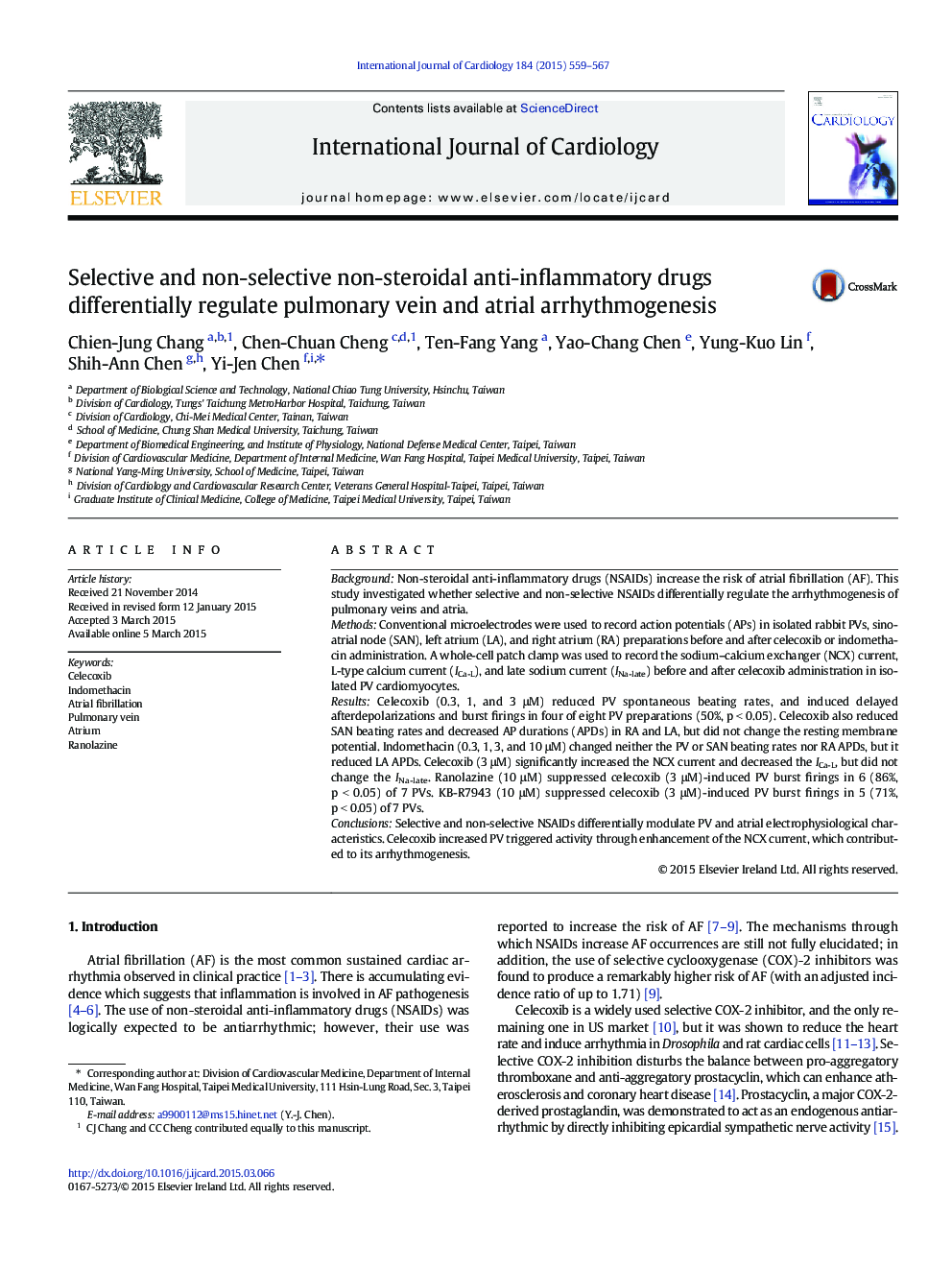| Article ID | Journal | Published Year | Pages | File Type |
|---|---|---|---|---|
| 5968384 | International Journal of Cardiology | 2015 | 9 Pages |
â¢The use of NSAIDs, especially in COX-2 inhibitors, increases the risk of AF.â¢Celecoxib, but not indomethacin, increases PV arrhythmogenesis.â¢Celecoxib can increase sodium/calcium exchanger (NCX) current in PV cardiomyocytes.â¢Ranolazine and KBR-7943 blocked NCX and attenuated the celecoxib-induced PV firing.
BackgroundNon-steroidal anti-inflammatory drugs (NSAIDs) increase the risk of atrial fibrillation (AF). This study investigated whether selective and non-selective NSAIDs differentially regulate the arrhythmogenesis of pulmonary veins and atria.MethodsConventional microelectrodes were used to record action potentials (APs) in isolated rabbit PVs, sinoatrial node (SAN), left atrium (LA), and right atrium (RA) preparations before and after celecoxib or indomethacin administration. A whole-cell patch clamp was used to record the sodium-calcium exchanger (NCX) current, L-type calcium current (ICa-L), and late sodium current (INa-late) before and after celecoxib administration in isolated PV cardiomyocytes.ResultsCelecoxib (0.3, 1, and 3 μM) reduced PV spontaneous beating rates, and induced delayed afterdepolarizations and burst firings in four of eight PV preparations (50%, p < 0.05). Celecoxib also reduced SAN beating rates and decreased AP durations (APDs) in RA and LA, but did not change the resting membrane potential. Indomethacin (0.3, 1, 3, and 10 μM) changed neither the PV or SAN beating rates nor RA APDs, but it reduced LA APDs. Celecoxib (3 μM) significantly increased the NCX current and decreased the ICa-L, but did not change the INa-late. Ranolazine (10 μM) suppressed celecoxib (3 μM)-induced PV burst firings in 6 (86%, p < 0.05) of 7 PVs. KB-R7943 (10 μM) suppressed celecoxib (3 μM)-induced PV burst firings in 5 (71%, p < 0.05) of 7 PVs.ConclusionsSelective and non-selective NSAIDs differentially modulate PV and atrial electrophysiological characteristics. Celecoxib increased PV triggered activity through enhancement of the NCX current, which contributed to its arrhythmogenesis.
